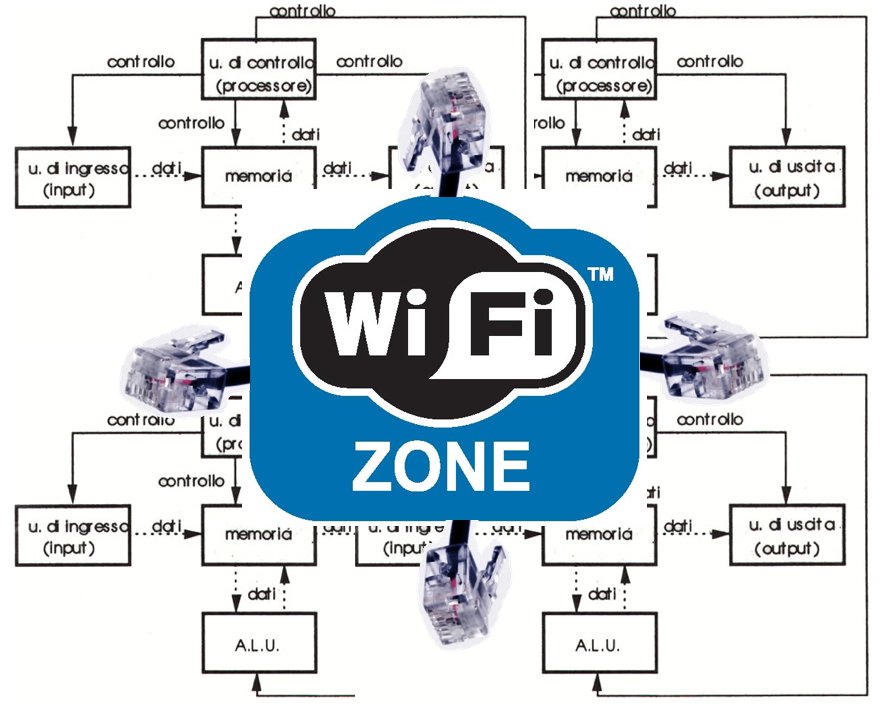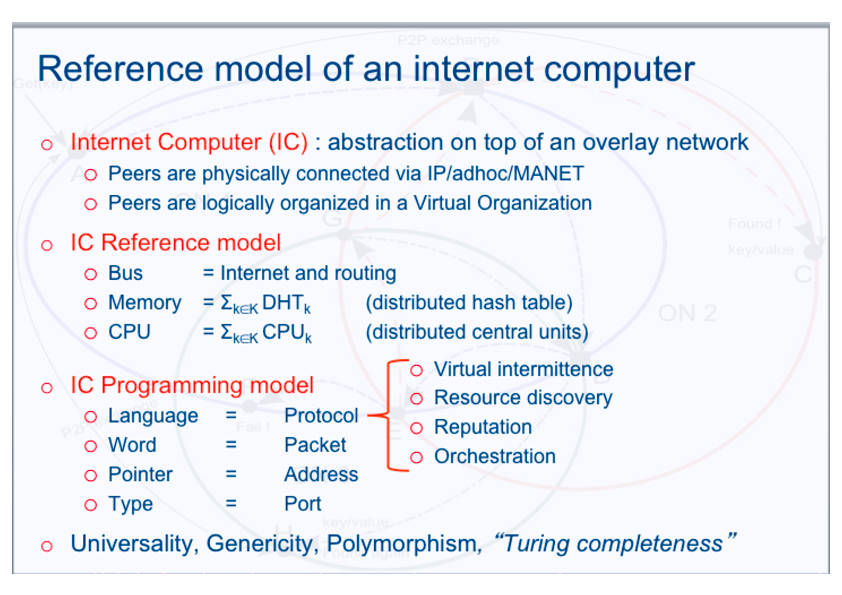Section: Overall Objectives
LogNet's Motto and Logo and Manifesto
Our Motto is “Computer is moving on the edge of the Network...” by Jan Bosch, Nokia Labs, [LNCS 4415, 2007] and our logo is in Figure 1 .
We propose foundations for generic overlay networks and overlay computing systems. Such overlays are built over a large number of distributed computational agents, virtually organized in colonies, and governed by a leader (broker) who is elected democratically (vox populi, vox dei) or imposed by system administrators (primus inter pares). Every agent asks the broker to log into the colony by declaring the resources that can be offered (with variable guarantees). Once logged in, an agent can ask the broker for other resources. Colonies can recursively be considered as evolved agents who can log into an outermost colony governed by another super-leader. Communications and routing intra-colonies goes through a broker-2-broker PKI-based negotiation. Every broker routes intra- and inter- service requests by filtering its resource routing table, and then forwarding the request firstly inside its colony, and secondly outside, via the proper super-leader (thus applying an endogenous-first-exogenous-last strategy). Theoretically, queries are formulas in first-order logic equipped with a small program used to orchestrate and synchronize atomic formulas (atomic services). When the client agent receives notification of all of (or part of) the requested resources, then the real resource exchange is performed directly by the server(s) agents, without any further mediation of the broker, in a pure peer-to-peer fashion. The proposed overlay promotes an intermittent participation in the colony, since peers can appear, disappear, and organize themselves dynamically. This implies that the routing process may lead to failures, because some agents have quit or are temporarily unavailable, or they were logged out manu militari by the broker due to their poor performance or greediness. We aim to design, validate through simulation, and implement these foundations in a generic overlay network computer system.
Therefore, the general objectives of LogNet can be summarized as follows:
-
to provide adequate notions and definitions of a generic overlay computer: logic, communications, implementations, applications, hardware;
-
on the basis of the above definitions, to propose a precise architecture of an overlay computer with related execution model and implement it, see Fig 1 ;
-
on the basis of the above definitions, to implement useful applications suitable to help the logical and software assembling of an overlay computer and experiment it at large scale;
-
putting our savoir-faire in logics, type theory, formal systems, object-oriented, functional programming to the service of telecommunications and the so-called Internet of the future.



